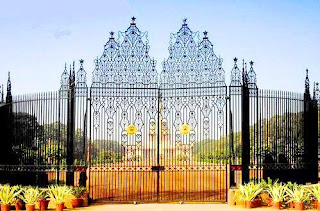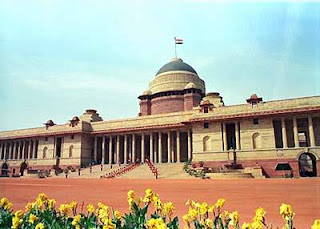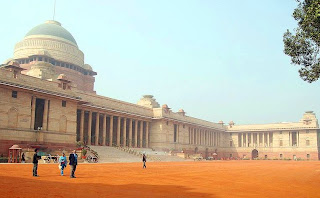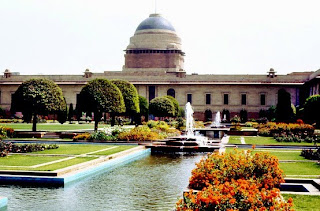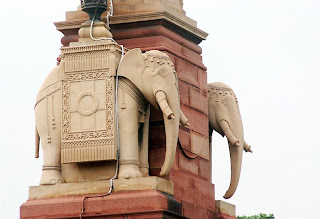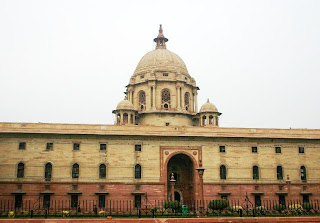
(left image credit: Sebastien Tixier, right image original unknown)
What's now decay and rot once was bright and brilliantly full of hope: Who lived here? What were their lives like? What happened? How did it all come apart? How did it all crumble to almost nothing?
In the case of Hashima Island, or Battleship Island (Gunkanjima in Japanese) as it's often called, hope and optimism became dust and decay because one black resource (coal) was replaced by a cheaper black resource (oil). Populated first in 1887, the island – which is 15 kilometers from Nagasaki – only began to really, and phenomenally, become populated much later, in 1959.







This island does look like a battleship from this angle:

Hashima is, for many ruin fans, the rotting and collapsing grail, the benchmark all other crumbling structures are measured against – and seeing pictures of the place it's easy to see why. Not only is Hashima frighteningly preserved in some places, as if the residents had just stepped out as few minutes before, but it is also, contrarily, spectacularly falling down. Beyond its current awe-inspiring state of decay, the island's dramatic isolation and its bizarre history make it the ruin of ruins.















Before that day when coal was replaced by oil, Hashima was the most densely populated area – ever. On that tiny island, crammed into what are now decaying tenements, were thousands of miners, their families (including children), support staff, administration, and everything necessary to make their lives at least tolerable. It's hard to imagine when looking at the empty doorways, ghostly apartments, and hauntingly vacant corridors what the lives of those people might have been like.

See the great gallery of Hashima Island, by Japanese photographer Saiga Yuji - here.

Famous Walled City of Kowloon: Living Inside the Maze
Unlike the post-apocalyptic drama of Hashima, we can very easily imagine what the lives of the residents of the famous Walled City of Kowloon were like – in fact we can ask them, as their city was torn down in 1993. The reason why the Walled City gets so frequently mentioned as a ruin is, while it was there, it was as if the people who lived in it were living their lives in the guts of some great, monstrous, maze.

Somebody said that it looks like "those boxes of scrap metal... that have been squashed and compacted together" -


To say that the city had a long history is an understatement, as its roots go back to the Song Dynasty (960 AD, if you need to know the date). The city was a curiosity for a very long time – a strange bit of legal knotting making it Chinese and not British -- but the labyrinth didn't start to grow appreciably until after the second world war when it became a haven for... well, people without a state: refugees, squatters, thieves, drug-dealers, and much more (and much worse). Neither Great Britain nor China refused to have anything to do with the immense warren of walkways, apartments, workshops, factories, brothels, gambling dens, and opium dens.
Kowloon Walled City, circa 1973:

The Triad, who represented most of the criminal element, were pretty much forced out in the 70s – by a police attack some 30,000 strong, no less -- but the city remained as a kind of anarchist warren, a world-unto-itself where the residents built and maintained pretty much everything.

Looking at pictures of the city today, it looks like some kind of ramshackle prison, a cyberpunk nightmare of florescent lights, spectrally flickering televisions, and mazes of perpetually damp hallways and trash-strewn alleyways. Yet, for many people living there, it was simply home.


In any case, the end of the living ruin that was the Walled City came to an end in the 90s when the residents were evacuated and their fantastic city-within-a-city was torn down. Interestingly, the Walled City has a strong connection to Hashima as, at its height, the Walled City had a population density almost rivaling that Japanese island. Before the bulldozers came, it had a staggering population of 50,000 people, all living in an area the size of a few city blocks.

Here are some of the videos showing the exterior and the ghastly interior of the Walled City: Video 1, Video 2, Video 3
Ruins of a... Vacation Spot From the Next Century
But if you're talking ruins you have to talk about the ruin FROM THE FUTURE .. or at least a ruin that looks like it came from there.

If you travel to Taiwan, up north to be specific, you will find yourself in a what looks like the fantastic set from some kind of big-budget science fiction epic: the Resort of San Zhi. Built in the 1980s, the resort was supposed to be, planned to be, a vacation spot from the next century .. BUT TODAY!
Unfortunately, the dreams of the developers stayed just that and, beyond a few remarkably-well-preserved, sections, San Zhi never materialized. But what they did build, and that's still there in all it's ruinous glory, is amazing: crumbling residential pods on a bleak and blasted landscape, a mini-sprawl of the future falling...


Decaying, rotting, crumbling, collapsing – ruins are the remains of what was, of the lives of the people who lived in them. In the case of Hashima Island, what remains teases us with thoughts of what it must have been like to live in the most densely populated area in the world... with the Walled City of Kowloon, we instead dream of what it must have been like to be a resident of a labyrinthine living, breathing ruin; and then there is the painful folly of San Zhi – a ruin not from the past but strangely, wonderfully, from a tomorrow that might have been.













 In 1947, when India became independent, the Vicefroy’s house was re-named Government House and when the country became a republic in 1952 it was re-christened as Rashtrapati Bhavan (President Quarters). The total cost of constructing the Rashtrapati Bhavan crossed £12, 53,000 in British India.
In 1947, when India became independent, the Vicefroy’s house was re-named Government House and when the country became a republic in 1952 it was re-christened as Rashtrapati Bhavan (President Quarters). The total cost of constructing the Rashtrapati Bhavan crossed £12, 53,000 in British India.

